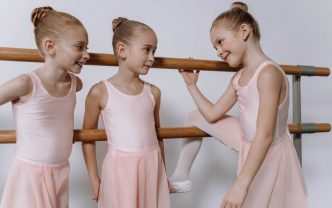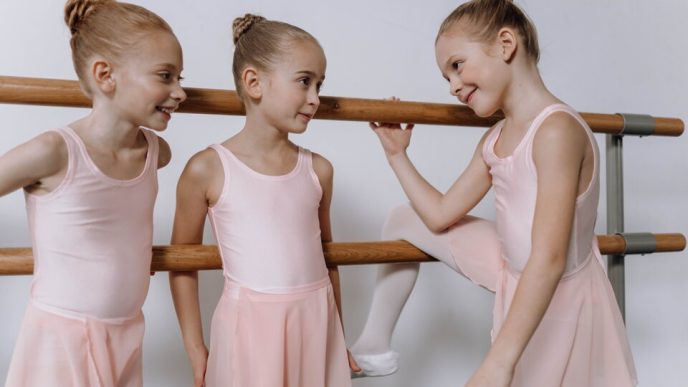A Focused Alternative to Traditional Classrooms
Some brilliant, humorous, potential-filled boys struggle in traditional schools. Crowded halls may increase anxiety. Impulsivity may lead to office referrals. Perhaps reading never clicked and grades are like quicksand. Where traditional schools run out of room, specialised institutions combine academics with therapeutic support so boys can study and recover.
These schools are built for calibrated progress. They operate on the belief that behavior communicates need, that emotions shape cognition, and that a good plan beats a good pep talk every time. Instead of “try harder,” the message tilts toward “let’s make the environment work for how you learn.”
Smaller Classes, Bigger Gains
In a specialized setting, class sizes shrink and attention expands. Teachers aren’t juggling thirty competing storylines; they’re focused on a handful of students, each with a clear, individualized plan. Lessons flex to meet different learning profiles—more visuals for the literal thinker, more hands-on for the kinesthetic learner, more chunking and scaffolding when executive function is wobbly.
Feedback is immediate and personal. A boy struggling with fractions gets guided practice, not a red X and a sigh. A reader stuck at decoding moves through targeted intervention that respects pacing and builds fluency step by step. Progress shows up in small wins—a paper turned in on time, a quiz without panic, a class discussion that feels safe—and those wins stack into momentum.
Therapy Woven Into Everyday Learning
These schools stand out not for weekly counselling but for how they integrate emotional support into the school day. Licensed clinicians work with instructors to create routines that deescalate tension and teach coping in real time. Individual therapy, small group sessions, and family work unite home and school.
Approaches tend to be practical and skills-based: naming emotions, practicing self-regulation, shaping problem-solving, and building resilience with tools that feel doable. Staff use trauma-informed strategies—predictable routines, calm tone, choice where possible—so safety isn’t just a promise, it’s a lived experience from first bell to last.
Social Learning That Sticks
Many boys arrive with bruised social confidence. Specialized schools make social skills a core subject, not a side note. Peer interactions are guided and intentional: structured games, role-playing conflict resolution, restorative circles where harm is acknowledged and repaired. Adults model the passport of respectful communication—firm boundaries, fair consequences, and plenty of praise when effort leads.
Over time, awkward becomes less awkward. The boy who avoided group work starts volunteering. The one who defaulted to sarcasm learns how to disagree without detonating the room. Friendships form in an environment that makes space for second chances and celebrates the micro-moments of cooperation.
Safety, Structure, and Rhythm
Predictability is a pressure valve. Specialized schools lean into structure—clear routines, consistent rules, and trained staff ready to de-escalate rather than confront. Transitions are smooth because everyone knows what’s next; expectations are posted, reviewed, and reinforced. Even the physical space is considered: quieter corners, sensory supports, visual schedules, and purposeful movement breaks.
When things go sideways, the response is steady and strategic. Crisis is handled with calm, and the follow-up focuses on repair and learning, not shame. Boys who’ve learned to brace for conflict find a different rhythm here—one that lowers vigilance and raises engagement.
What Progress Looks Like
Progress in these schools isn’t a single metric. It’s a quilt of academic gains, behavioral steadiness, and emotional growth. Attendance ticks up as dread ticks down. Grades stabilize, then climb. Incident reports shrink in both frequency and intensity. Parents report fewer Sunday-night meltdowns. Boys who once resisted feedback start asking for it.
Staff use data and stories to track growth. The athlete who turned competitiveness into leadership, the kid who went from outbursts to self-advocacy, and the one who closed a reading gap with daily targeted practice. As students prepare for the next chapter, supports are mapped for returning to normal education, graduating, or entering a career pathway.
Who Thrives in These Settings
These schools serve boys with ADHD, anxiety, depression, trauma histories, autistic spectrum disorders, and disturbed school experiences. The requirement is for more individualised education and therapeutic scaffolding than a conventional school can provide.
The fit works best when families and staff are aligned on goals, and when the boy’s strengths—humor, curiosity, grit—get as much airtime as his struggles. Specialized doesn’t mean forever; it means focused. Many students use the setting as a bridge to success in mainstream environments. Others stay through graduation, building a stable runway into adulthood.
Why It Doesn’t Feel Like “Less School”
Rigor doesn’t vanish in a specialized program; it’s reframed. Standards remain, but pathways vary. A student might demonstrate understanding via project-based learning instead of a timed test, or take more time on foundational skills before sprinting ahead. Accountability shows up in clear expectations, consistent reinforcement, and authentic assessments that honor how a student best shows what he knows.
Motivation comes from relevance—less worksheet, more why. A moving scientific lab becomes a skateboard experiment. Writing units encourage personal narrative with organisation. If school is meaningful and achievable, effort follows. Supported work generates lasting success.
Key Benefits at a Glance
- Personalized instruction with small classes and individualized learning plans
- Therapy integrated into the daily schedule, not siloed to a single session
- Trauma-informed practices that prioritize safety, predictability, and dignity
- Explicit social skills instruction and restorative approaches to conflict
- Data-informed progress monitoring with collaborative family involvement
- Flexible assessments and pathways that maintain academic rigor
- Transition planning that bridges to mainstream schools, vocational programs, or college
- Increased self-esteem, steady routines, and healthier coping strategies
FAQ
What makes a school “specialized” for troubled boys?
It combines academics with therapeutic services, small classes, and trauma-informed practices tailored to boys who need more support than a traditional setting provides.
Are these programs only for severe behavioral issues?
No; they serve a spectrum of needs, including anxiety, ADHD, learning differences, and social skill challenges alongside more acute behavioral concerns.
Do students fall behind academically in a therapeutic setting?
The goal is acceleration through personalization; many students catch up or even excel once instruction and supports are aligned to their needs.
How is family involved in the process?
Families partner through regular communication, coaching, and scheduled counseling or team meetings that sync home strategies with school plans.
Are specialized schools residential or day programs?
Both exist; some are day schools integrated into local communities, while others offer residential options for intensive, 24/7 support.
How long do students typically stay?
Length varies by need; some transition after a semester or year, while others remain through graduation to ensure stability and sustained progress.
What does discipline look like?
Discipline leans restorative and skill-building, focusing on repair, reflection, and consistent consequences rather than punitive measures.
Can students join sports and clubs?
Yes; programs often include athletics, arts, and extracurriculars designed to build teamwork, confidence, and healthy outlets.
Will a student be able to return to a mainstream school?
Many do; transition planning prepares students with the skills, supports, and data needed for a successful move back to traditional settings.
How is progress measured?
Schools use academic data, behavior metrics, attendance, and therapist notes, paired with anecdotal evidence from teachers and families.














